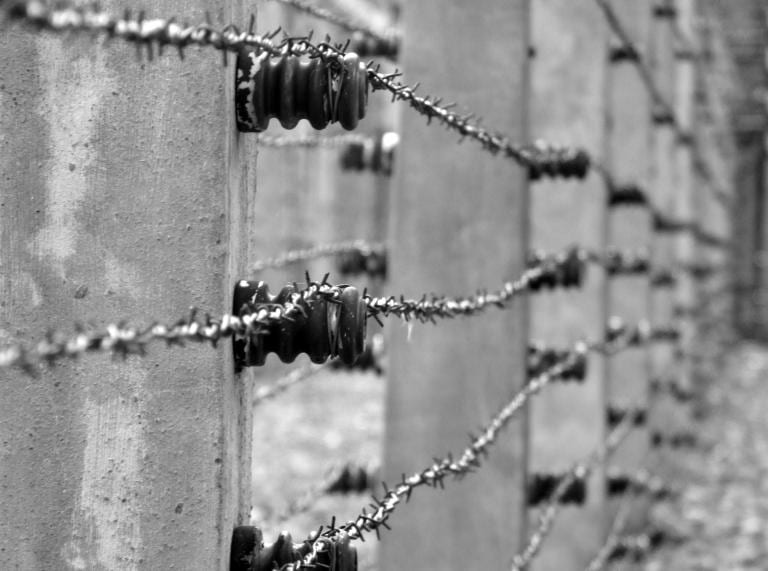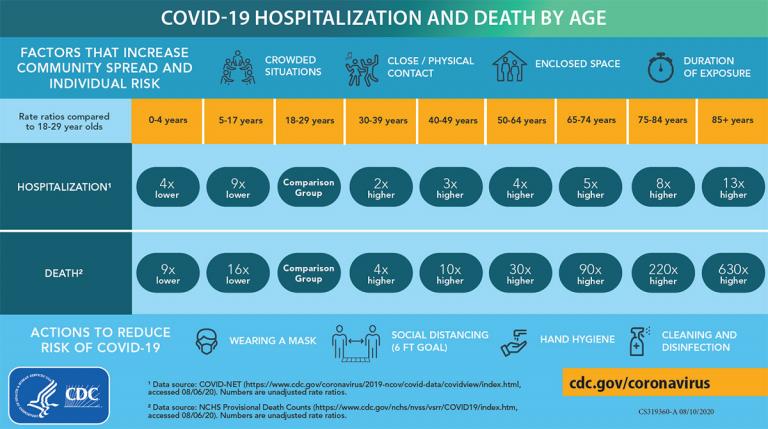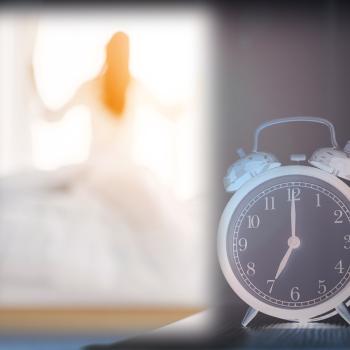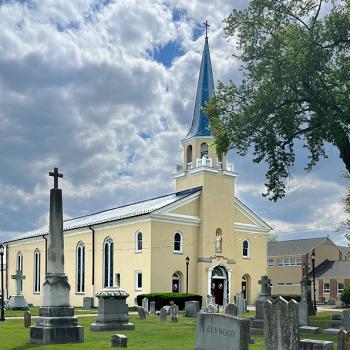First, we are all going to die. Second, most of us will not die the way we would like to. Third, by denying touch, we condemn our elderly to the worst of all deaths. We may as well put them behind barbed wire and acknowledge that we have imprisoned them.

I’ve read one too many news reports now about the lockdowns of nursing homes, and their insistence that those vulnerable elderly no longer receive visits from family members other than the occasional “visit” through a closed window, no life-giving touching or hugs permitted.
Certainly, there are reasons to be concerned about what happens in those facilities. This site gives the best information I’ve seen about the percentages of people in those types of facilities that have become ill.
The most sobering statistic: 45 percent of U.S. COVID-19 deaths have occurred in nursing homes and assisted living facilities, but residents of these homes comprise about .06% of the total U.S. population.
Nonetheless, this kind of radical sequestration and removal from the most basic of human needs is what happens in prisons and concentration camps. We have locked behind today’s version of barbed wire the very ones in our society who are least likely to be able to have their voices heard in protest.
Good heavens–what are we thinking? This is protection? To keep away from the most vulnerable those family members whose presence ensures that they are getting adequate care, fed regularly, medications arriving on schedule and turned as necessary to prevent bedsores? There is no way that overworked, untrained, and scared staff can compensate for the lack of family presence and supporting care. Furthermore, with all the masks and gloves, nursing home residents are further deprived of even the joy and necessity of a human smile or the touch of human skin.
If you live in Texas, don’t touch your loved ones. Period.
Recently, the State of Texas has decided to allow for very limited nursing home visits, subject to multiple guidelines. Take a look at how each visit must go. I’ve put in boldface the ones that prohibit physical touching and even the option to see a smile:
-
Visits have to be by appointment only, with enough time to allow for cleaning and sanitation of the area where the visit takes place.
-
No physical contact is allowed between residents and visitors.
-
Visitors must be screened before each visit. Visitors are not allowed if they have a fever of 100.4 degrees and higher; exhibit any respiratory symptoms or other symptoms of COVID-19; have had contact with someone in the last two weeks who has tested positive for the virus; or traveled internationally in the last two weeks.
During the in-person visits, residents and visitors are required to:
- Wear a face mask for the entirety of the visit. Residents don’t have to wear a face mask if they are physically unable.
- Keep a 6-foot distance. Social distancing should be enforced by staff members, and it’s recommended the facility limit the number of people in each visitation area.
- Wash their hands before and after the visit. Facilities are also required to provide sanitizer or hand washing stations for visitors and residents.
Seriously, they must have lifted these from a prison manual. Unreal. And the mental and physical health of every inmate, and I don’t use the word “inmate” lightly, of nursing homes is rapidly declining.
Yes, those pesky COVID-19 concerns.
So what should we have done? The answer is not exactly rocket science. The moment the State of Washington reported the first cases (remember: the news about the virus in China has been widely disseminated by then), every single nursing home/long-term care facility SHOULD have been provided with top quality PPE for all staff and visitors. Just that alone, even without adequate testing, the ongoing shame of the U.S. response, would have stopped it in its tracks.
But we didn’t. And here we are.
Below is a genuinely helpful and understandable chart of how increasing age also increases the likelihood of death and/or hospitalization from Covid-19. If you are 85 and older, your chances of dying from Covid-19 are 639X higher than if you are in the 18-29 age group and get the virus.
That seems like a shocking statistic. But could we take a step back for a moment and ask this question: If you are 85 or older, isn’t your chance of dying from any infections disease far, far, far higher than what is always the healthiest age group of 18-29? Of course older people die more from Covid! Older people die more from everything. Why? Because older people are getting near death anyway. Their immune systems are declining, and almost all have other underlying conditions. It doesn’t take much to bring about the end–and yet, many, amazingly, do survive this virus.
First, we are all going to die.
Here’s our real problem: the general overall refusal to have honest conversations about life and death.
Why did we forget that pneumonia was for so long considered a friend to the aged?
People, it is time. We’ve got to talk about this.
Some basic facts.
First, we are all going to die. Second, most of us will not die the way we would like to. Third, by denying touch, smiles, and voice to our vulnerable elderly, we condemn them to the worst of all deaths: alone and unloved.
An Ordinary Death
In 2010, my mother, then 89, had a massive stroke. The day before her stroke, she was actively trading stocks–she was a bit of a financial genius–the day after, she was totally helpless, 70% of her brain destroyed.
She has witnessed too many awful deaths of her friends and wanted none of that. As a preventive, she had carefully worked out how she wanted to handle a situation like this.
The hospital ignored her instructions. From the E.R. nurse, as I waved her wishes in front of them, “She didn’t know what she was talking about.”
Yes, she did.
I began to blog about what happened, my own agony, the horrific decisions in front of us. In time, that blog spread around the world, resonating with so many who were dealing with aging parents and with no good answers.
 I turned the blogs, with the additions of emails to my kids and my private journaling, into a book, An Ordinary Death, Where Grief and Relief Hold Hands, (you can get the Kindle version here, but I warn you, it is dated and needs a revision). I found out some years later that this book created almost a cult following among physicians who were trying to figure out a better way to handle their dying patients–and whose families refused to face the inevitable.
I turned the blogs, with the additions of emails to my kids and my private journaling, into a book, An Ordinary Death, Where Grief and Relief Hold Hands, (you can get the Kindle version here, but I warn you, it is dated and needs a revision). I found out some years later that this book created almost a cult following among physicians who were trying to figure out a better way to handle their dying patients–and whose families refused to face the inevitable.
How DO we want to die?
I asked then, and I ask now, “How do we want to die?” Do we want to be alone, untouched, sanitarily protected from any possible pathogens, even those brought to us by our loved ones?
This is a legitimate question, no matter how hard it is to voice. My body is going to give out. So is yours. And then we face the great mystery of what happens.
Those of us who have chosen a life of faith trust in our reception into the Holy Presence, held in the fullness of God’s love. Others feel and believe differently. But, no matter what we trust will happen after death, we are all going to see the end of this physical life.
Why do we pretend that it will not happen to us? We plan for our educations, careers, marriages, children, vacations, retirement, family reunions, hobbies, parties . . . and we can’t plan for the end of our lives?
So let’s go back to what is happening. Again, the vast majority of those who die from COVID-19 are elderly. But again, the vast majority of those who die from any infectious disease will be the elderly. Is it really that hard to understand?
When we send our loved ones to nursing homes, for the most part and with few exceptions, we are sending them there to die. Our hopes: they will be well-cared for in the process, and that care needs family oversight. Period.
We can’t or possibly won’t, take care of them at home–and there are many legitimate reasons we can’t–but we are not putting them in nursing homes because we think they are going to magically get well and come back home. We send them there because rehabilitation therapies no longer work. We seek compassionate, loving care until their bodies give out.
Why do we not immediately provide comfort care, i.e., hospice, for everyone admitted to a nursing home for the long run?
Why do we permit and even encourage the endless and fruitless hospital ins and outs for our beloved elders, further disorienting them? We subject them to procedure after procedure, each weakening them further. Instead, we should be filling them with music and memories and joy and favorite foods and, most of all, needed human touch and loving smiles.
Why do we not TALK about this? Why don’t we consider and plan how we want to say goodbye to this world and prepare ourselves for this great inevitability?
Mostly, I am asking, “What IS THE MATTER WITH US?” Why can’t we speak the truth about these things? Why do we insist on doing “everything” to our very frail elderly when “everything” likely means causing unending suffering instead of offering what I called an “ordinary death,” to be welcomed when the time has come?
My heart grieves right now for every person caught in this hidden tragedy besetting all those trapped in nursing homes and all their loved ones trapped outside. I see them desperately trying to reach each other through what might as well be barbed wire fences, presided over by armed guards, prepared to shoot at every infraction.
For once, let some common sense prevail. Let us embrace life–and embrace death–and do each to the glory of God.
Photo credit: 1607747 © Brandon Tucker – Dreamstime.com
Chart: from the U.S. Government CDC website














